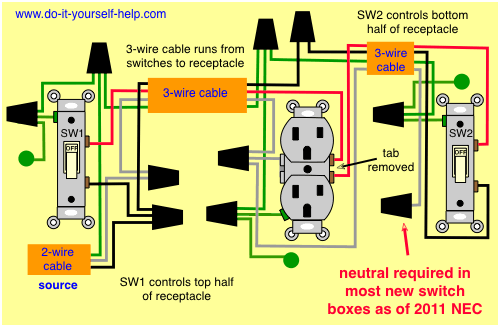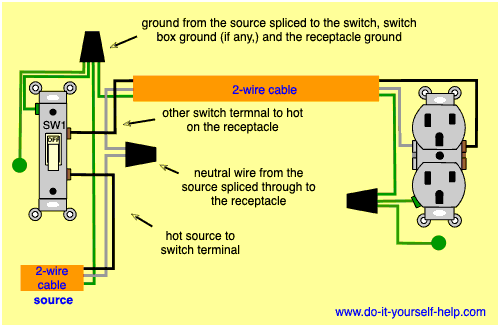2 wire control and 3 wire control. A 3 wire pump actually has four wires going into the control box and 4 wires going to your pump.

Wiring A 3 Way Switch
2 wire vs 3 wire control. In both circuits shown above the reverse command can be ignored if not necessary for the application still the same circuit is applicable for 2 wire and 3 wire control. The 3 wire system is less common than the 2 wire system it includes a neutral at the switch as well as the live and switched live wires. One example of a 3 wire lighting system. If the single pole switch is toggle closed the motor starter will start and stay on for as long as the single pole. Inside is the relay and start capacitor. 2 wire circuit a 2 wire black and white with the ground cable will be used for one hot and one neutral or one circuit.
The two wire circuit in configuration 2 operates as follows. What is the difference between 2 wire rtd 3 wire rtd. 3 wire circuit a 3 wire circuit black red white and the ground cable can be used for feeding two circuits that will share the neutral and ground wire. Benefits of a 2 wire over a 3 wire pump. An example of a 3 wire lighting circuit is shown in figure 2. When to use 2 wire control and when to use 3 wire control.
2 wire rtds are mostly used with short lead wires or where close accuracy is not required. In h2os experience we find the 2 wire pumps to be more reliable and robust. If the single pole switch marked s1 is left open then the liquid level switch in the circuit will now be the control. 2 wire construction is the least accurate of the 3 types since there is no way of eliminating the lead wire resistance from the sensor measurement. Ironically a 2 wire pump actually has three wires coming from your home to the pump two hot and one ground. Below is a control box.
2 wire control vs 3 wire control. It means if the stop command is provided separately it is called 3 wire control and if separate stop command is not provided separately it is called as 2 wire control.















